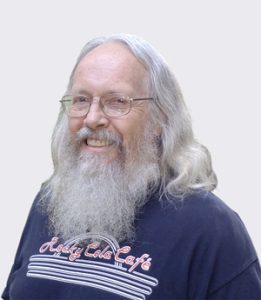Montrose Search and Rescue – Long Search for a Plane Crash
In March 1982, a winter storm was blowing in from the north and was predicted to bring rain and snow to the higher elevations. Late on a Tuesday night, a Cessna 340, a small twin-engine plane, taxied for take-off from Van Nuys Airport. Inside the plane, two men and a woman were going to try to beat the storm for a trip to Las Vegas.

president of the Historical Society
of the Crescenta Valley and loves local history. Reach him at
lawlerdad@yahoo.com.
But at 11:30 p.m. the tower received a frantic mayday from the pilot, saying the plane’s wings were icing up and that they were in trouble. The radar showed the plane at 5200 feet, very close to 4600-foot Mendenhall Peak, halfway across the San Gabriel Mountains. In a few moments the tower lost radio contact and the plane disappeared off the radar.
The Montrose Search and Rescue team was called out that night and drove the dark back roads to get close to Mendenhall Peak just as the storm hit with full fury. Its way was blocked by a landslide, so the team set out on foot. The bad weather was getting worse, with heavy rain and sleet. As day dawned on Wednesday morning, snow and heavy fog reduced the visibility of the search teams to near zero, making an air search impossible. MSAR teams continued to comb the canyons of the peak for two days in the rain and snow but found nothing. Heading into the weekend the weather was predicted to clear, so a county-wide call was put out for several SAR teams, along with support aircraft.
The search got off to a bad start Saturday morning when a sheriff patrol helicopter heading through Big Tujunga Canyon to the search area hit some power lines. The two deputies inside rode the disabled copter to the ground where it hit hard and burst into flames. The deputies were able to stagger away from the wreck and were treated for back injuries.
On the mountain, over 50 searchers divided into 10 teams were being flown up into the snow of Mendenhall Peak for a ground search. Sue Lapham was a brand-new member of the MSAR, and had just finished her ice and snow training and her helicopter training. She was still a trainee, and this was her first plane crash. Here is her memory of that day:
“I remember that call well. I was assigned to Search Team No. 2. There were a total of 10 teams to be dispatched in sequential order by Air 5, the Sikorsky helicopter, to the ridge-tops of the various canyons along the projected flight path. We were airlifted from the landing zone at base camp up to the top of a ridge. Our assignment was to carefully search the area of Noel Canyon by working our way down the steep terrain.
“I was with the ‘lucky’ team that day. We found the aircraft or what was left of it. As we were working our way down the mountain through the snow, we noticed animal tracks, mostly rabbit tracks. Suddenly there was bright red blood in the animal tracks. As soon as we noticed the blood, we started to notice other debris, presumably from the plane crash. Then we came across the bodies.”
The pilot’s body was still inside the wreckage and the two passengers were outside among the strewn wreckage. They had very obviously died instantly. Sue got on the radio and called in their find to the team leader at the base camp. Sue remembers that she was nervous and that she flubbed the radio call.
“The proper radio response would have for me to say my team number and state that we found a ‘927-D’ (radio code for a deceased person). I just blurted out ‘Team 2 has a dead body!’”
That call, poorly executed or not, changed the focus of the search from a rescue to a body recovery. The crash site was secured, search teams were called in from the field, and the coroner was called. The long search had ended, and Sue had earned some hard-won experience in the sometimes brutal world of the MSAR.
